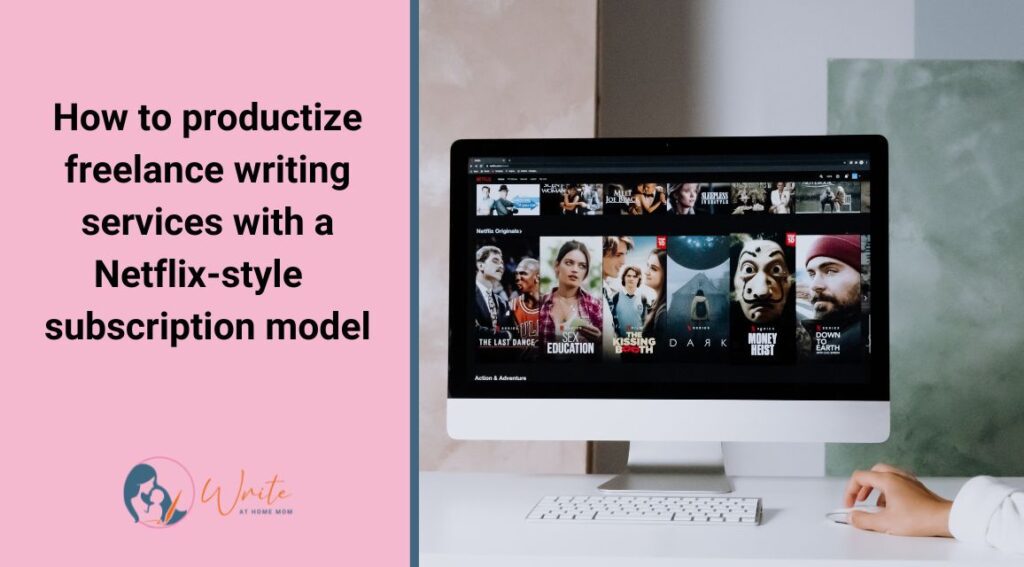As a successful 6-figure freelance writer and mompreneur, I’ve navigated the labyrinth of freelance writing rates. From hourly to flat rates, and even a weird token-based system (an agency’s idea for a “clever” way to pay writers), I have seen it all.
Time and time again, I’ve faced and been asked the daunting question: “How much should I charge?”
Now that I’ve “made it” so to speak, I feel like I have some pretty valuable insight into the various ways you can charge as a freelance writer – so I wanted to share what works and doesn’t work for me. But my opinions are also based on what I’ve seen other successful freelance writers do well, and what’s been proven to bring in consistent income over time.
Here are my insights to help you price your writing work effectively. Let’s dive in.
The Age-Old Debate: Should Freelancers Charge Hourly or Flat Rates?
One of the biggest debates I see among freelance writers is whether to charge hourly or flat rates for their services. Both have pros and cons, so it’s important to understand each model before you decide which one works best for your business.
Hourly rates are great for projects with an unknown scope or when you’re not sure how long it will take to complete the project. This can be especially helpful for writers who are just starting out.
But let me be real, there are also some downsides to the hourly rate:
- You don’t know how much money you will make at the end of a project.
- Tracking time can be a cumbersome process that takes away from your productivity.
- It can be difficult to estimate how long something might take, and clients often underestimate their own needs which can leave you feeling underpaid for your work.
- Difficult clients may try to nickel and dime you when that final bill comes due. This makes for awkward conversations where you have to defend your work and process.
- You’re capped at your hourly rate. It’s hard to grow or upsell when you see an opportunity to do more (basically, it’s like being an employee without the benefit of health insurance and paid time off…).
Regardless, many freelancer writers do still charge by the hour (around 18% based on this report from writer Ashley R. Cummings). So this is the minority approach, but still, one that can work if you understand the risks and how to protect yourself.
On average, freelance writers earn upwards of $33/hour or more. This might sound appealing at first glance, but overall it limits your earning potential.
From the minute you start freelance writing, I recommend you track your time. You can use a simple spreadsheet or desktop app like Toggl to do this. It doesn’t have to be anything fancy, but it will give you data on how long certain projects take and help you better estimate your rates for future work.
If you start doing this right at the beginning of your freelance writing career, you’ll be able to move away from hourly rates and transition to better pricing models (which we’ll explore below).
The Classic Approach: Per-Word Pricing
Per-word pricing is another popular model for freelance writers. In the US, rates for writing can be from about $.15 – $.50 per word and beyond. In fact, I’ve applied to projects that offer as much as $1 per word. For a 1,000-word blog, that’s $1000. Not too shabby for something that takes me a few hours to write (I use AI copywriting tools to make it easier and more efficient. You can read about my AI time-saving techniques here).
The great thing about the per-word pricing model is that, for lengthy projects, you can make more money.
The downside is $.15 for a 500-word blog is $75. That doesn’t always feel like enough when you factor in the research and time it takes to complete a post.
Also, for copywriters, per-word pricing can actually punish you for being succinct. Copywriting is all about being to the point and precise. Think of taglines like “Just Do It”. They don’t have many words but they pack a punch. Should you only get paid $.45 cents for a line like that?
Overall, per-word pricing can be great if you land the right gig. But it’s not always an easy way to make money and does not necessarily scale well over time. Also, for the client, the quality of work can sometimes take a backseat to quantity.
So just like hourly rates, per-word pricing is far from perfect and a model that I don’t recommend.
The New Kid on the Block: Flat-Rate, Project-Based Pricing
Flat-rate, project-based pricing is a strategy that’s gaining traction. With this model, you set a fixed rate for a project, regardless of the hours or words it takes. For instance, typical freelance writing rates for a 1,500-word blog can be $250 to $400. My blogs tend to fall in or above this range, allowing me to make as much as $100+ per hour.
With this pricing model, both you and the client know how much you’ll be paid for the project upfront. No surprises. Plus, it encourages clients to value the quality of your work over quantity, which is good for both parties.
This model also encourages you to think more strategically about the projects you take on, rather than jumping at every opportunity and seeing what sticks. You can focus more on getting high-value projects that will bring in more money over time.
Plus, flat-rate, project-based pricing helps you scale your business. You can work on multiple clients at once and grow both your revenue and client base quickly. All of my clients are currently on a flat-rate, project-based pricing model and it’s been great for me and (as far as I know) for them too. And I have clients that have stuck with me for as long as 4+ years with no complaints, so it’s a model that works.
The Next Evolution: Productized Services for Freelance Writing
Productized services are the Netflix of the freelance writing world. A relatively new model, it involves offering subscription-based services. This approach provides a consistent, predictable income for freelance writers, which can be a great way to grow your business.
The idea behind productized services is that you offer clients a “product” of sorts, with consistent deliverables and pricing. Every month, they have access to you and your services, with no surprises.
I’m incredibly fascinated by the idea of productizing my services because I see the benefits to both the client and myself:
- Writers don’t have to stress out about finding new clients every month because there is a consistent flow of income coming in.
- You get paid, even if you don’t have to write anything.
- Clients get access to you on a continuous basis, without having to renegotiate your rates or get a new writer up to speed on their brand/services/
- Clients know exactly what they’re getting for their money and they can continue using my services as long (or short) as they’d like without worrying about suddenly running out of budget.
- The “product” can fluctuate to fit the changing demands of the market, allowing clients and writers to stay flexible. If a client doesn’t need your services anymore, they can simply cancel their subscription and you’re no longer obligated.
- Because it’s a “product,” the writer can create a very efficient, systemized process for delivering the services, which increases profit margins while minimizing operational headaches.
Brett Williams, founder of DesignJoy, has used this model to build a $1M ARR “agency of one,” managing around 20 clients at a time as a solo designer and significantly increasing his prices in the process. His success story is a testament to the potential of productized services.
This is the video that turned me on to his story, and I’m eager to explore the possibilities for my own freelance writing business.
That said, I do see some issues with productized, subscription-based writing services… For example:
- If any number of clients can subscribe to the service at any time, how do you plan your schedule?
- What if multiple clients submit work requests on the same day? Will there be all-nighters and rushed work?
- What happens when you want to take a vacation but have consistent work requests in the monthly pipeline?
- Will clients actually be willing to pay for a subscription-based model?
These are questions I’m still exploring.
Lemon Leverage is a freelance copywriting service that is attempting to productize its offering with a monthly subscription service. You can check out their model here. If you’re a freelance writer considering this type of model, I recommend looking at their site, as it seems like it’s built directly on the back of DesignJoy’s success.
Again, I find this subscription model for freelance writing fees really fascinating. I’ll keep watching the market and updating my readers as I learn more and experiment with this approach.
Other Freelance Writing Pricing Models to Consider
Apart from the models discussed, there are other methods you could consider:
- Retainer contracts: A client pays a recurring fee for a set number of hours or projects each month. This model offers predictability but could limit your availability for other clients.
- Value-based pricing: Here, you price based on the value the client receives from your work rather than the time or words it takes. It requires a deep understanding of the client’s business and the impact of your writing.
- Salary-based contracts: Here, you take on a full-time writing role for one client and are paid a salary. It’s more akin to having an in-house job but with the flexibility of being able to work from anywhere.
Remember, no one-size-fits-all in freelance writing rates. Your pricing should reflect your experience, the value you provide, and the lifestyle you desire. Whether it’s hourly, per-word, flat-rate, productized, or some other model, choose a strategy that aligns with your goals and your life.
That’s what will allow you to turn a freelance writing side hustle into a full-fledged, six-figure freelance writing business.
So what pricing model are you currently using? What has been your experience with it? Let me know in the comments below!




